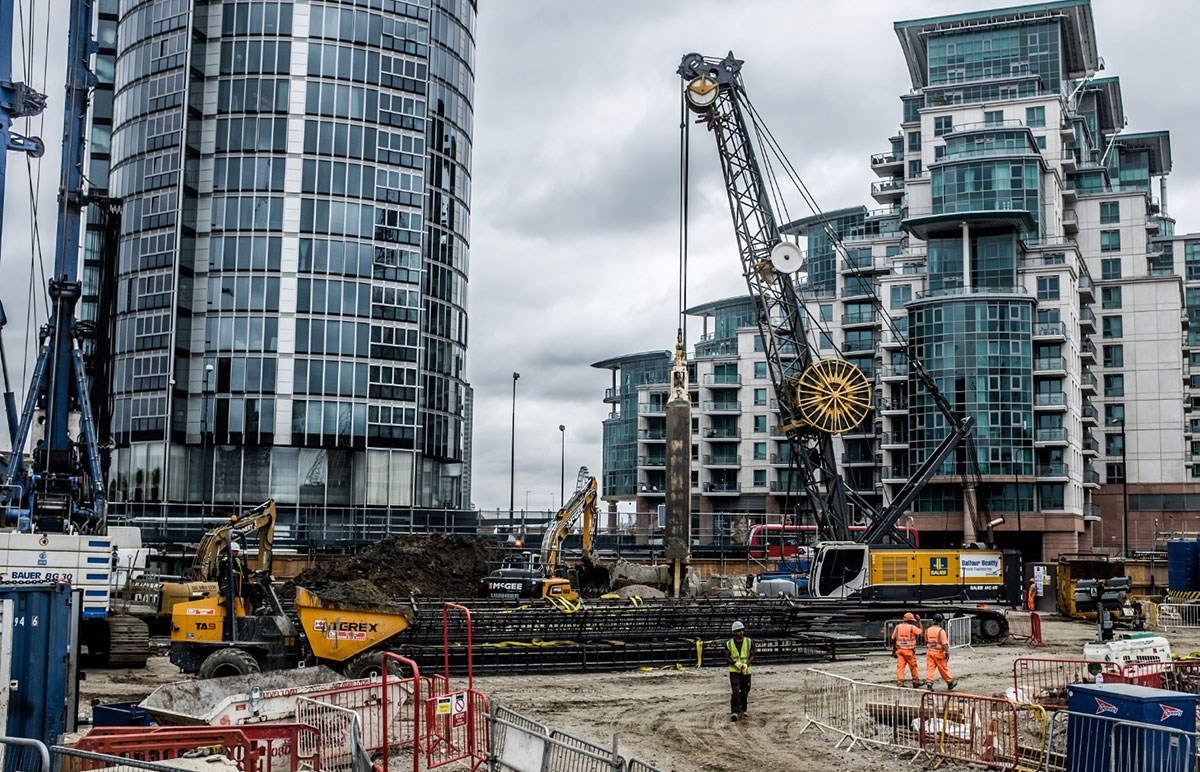The 7-Minute Rule for Geotheta
Table of ContentsA Biased View of Geotheta7 Easy Facts About Geotheta ExplainedThe Ultimate Guide To GeothetaSome Of Geotheta
They collaborate with civil engineers, architectural designers, architects, and various other experts to incorporate geotechnical considerations right into the general project design and construction process. This calls for reliable teamwork, coordination, and interaction to make certain that the geotechnical facets straighten with the project objectives and fulfill regulative demands.Mining & Materials Engineering: Principles of drilling, penetration rates, and factors influencing the choice of exploration approach. Characteristics of nitroglycerins, shooting systems and blast patterns. Blowing up techniques in surface area and below ground workings. Unique blasting techniques at excavation borders. Vibration and noise control. Mechanical and continuous strategies to fragmentation, consisting of longwall shearing and fullface boring.
Modelling of piece and fragment size circulations; comminution as a transfer feature. Comminution technology: squashing, grinding, size category. Integrated evaluation of fragmentation and comminution operations. Provided by: Mining & Products Design.
The Facts About Geotheta Revealed
Bachelor's degree programs in civil, geotechnical, geological, and ecological engineering typically last four years and include general education courses in English, social scientific research, and the humanities, in addition to programs in innovative maths, architectural geology, and fluid mineralogy. (https://anotepad.com/note/read/ew8kqmw7)
Geotechnical design entails the assessment of the soil and rock conditions at a specific site, and their ramifications for the growth of that website. As a lot of frameworks rely upon the ground for support, it lacks shock that a comprehensive understanding of the ground problems, and the suitability of structure systems, are important to the long-term stability and efficiency of the structure or framework.
The geotechnical group at Douglas Partners routinely talk to designers, style designers, programmers, and contractors to make suggestions on layout and growth propositions to make certain that the constructed frameworks are suitably designed for the ground problems. The style of footing systems requires to take into consideration the weight of the framework, the capability of the ground to support that weight together with motion tolerances and reliable building and construction.
The Greatest Guide To Geotheta
This job is substantially simplified by the usage of our Douglas Map geospatial platform that makes this information easily accessible in a simple to use internet internet browser interface. A geotechnical engineer will guide the drilling of boreholes and examination pits to collect soil and other examples, and additionally analyze surface attributes and ground exposures to create a geotechnical design of the subsurface problems.
Depending upon the project kind and ground conditions encountered, research laboratory testing might to name a few things evaluate strength, compressibility, reactivity and/or leaks in the structure of soil and rock examples. After this data is collected and looked at, the outcomes are used for a geotechnical design of the website, which is commonly offered as areas throughout the website.

A geotechnical investigation by nature can only analyze the ground problems at the locations drilled or excavated. Natural variations in soil and rock conditions can happen throughout a website and in between test locations. It is as a result good method that the geotechnical designer be preserved throughout building and construction of the task to provide on-site verification that the ground conditions run into follow the assumptions and suggestions provided in the geotechnical investigation record.
Get This Report about Geotheta
Geotechnical engineers utilize their thorough understanding of soil and rock to assess risk and fix issues on diverse infrastructure projectsGeotechnical engineering is a specialist branch of civil design which considers the behavior of earth materials and the application of soil and rock mechanics. Consulting Engineers. As a geotechnical engineer, you will assess the physical, mechanical and chemical properties of dirt and rock in order to develop structures, maintaining structures and earthworks
Geotechnical design is closely connected to and check my source overlaps with, both engineering geology and ground design - https://www.openlearning.com/u/ianhammond-shld0k/. It's feasible to be experts in geotechnics or help a geotechnical business however be called an engineering geologist or a ground designer. As a geotechnical engineer, you'll need to: build and maintain relationships with clients and various other experts associated with the site, throughout each projectmaintain safety criteria on website bear in mind cost effects when you make recommendationsstudy geological maps and airborne photographs from a series of resources and from different time periodsexamine construction prepares to see just how possible they are based upon your understanding of the siteinvestigate risks or geological threats for the sitesearch for ecologically delicate functions, such as landfill begin to establish factual and interpretive ground modelsplan area investigationsdrill and evaluate examples of bedrock, dirt, groundwater and extra materials oversee various other professionals on sitesolve technological issues as they develop, such as unanticipated frameworks at drill sitesmonitor conditions throughout and after building and construction to make sure structures are stable in the brief and lengthy termadding information accumulated on site to your preliminary researchcreating geotechnical calculations, illustrations, and two or three-dimensional computer system versions analyzing the datamaking suggestions concerning the suggested usage of the site

Comments on “The 6-Second Trick For Geotheta”